Telangana cuisine is characterized by its vibrant flavors, robust spices, and diverse ingredients. It offers a rich blend of both vegetarian and non-vegetarian dishes, with a focus on incorporating locally sourced produce and meats. Rice, lentils, and millets form the backbone of many meals, accompanied by a variety of spicy curries, tangy chutneys, and aromatic biryanis. The cuisine often features the use of tamarind, sesame, and red chili as key flavor enhancers, creating dishes that are both hearty and flavorful. Telangana cuisine provides a delightful culinary experience that reflects the cultural heritage and culinary traditions of the region.
Biryani
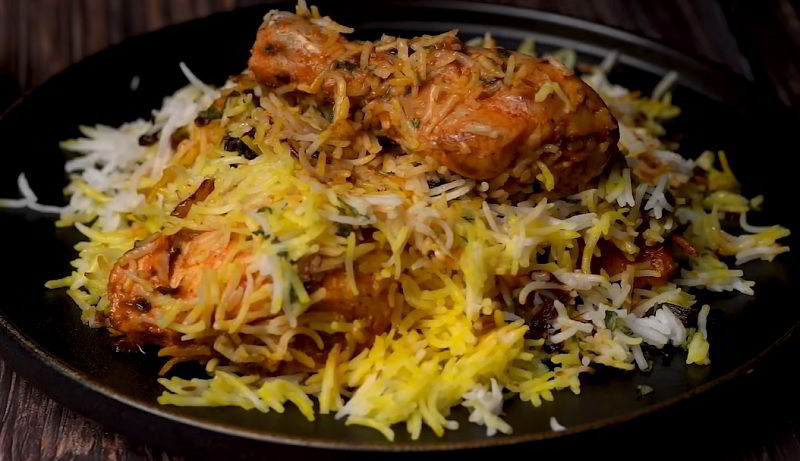
Biryani is a flavorful and widely popular rice dish that caters to diverse tastes. It embraces various meats like chicken, lamb, or goat, each lending its unique essence. Marinated in a blend of yogurt and spices such as cloves, cinnamon, and cardamom, the meat gains complexity. Fragrant basmati rice, pre-cooked with spices, forms the base, layered with the marinated meat, fried onions, mint, and coriander leaves for heightened aroma. Slow-cooked on low heat, the biryani allows flavors to intermingle, ensuring tender meat and rice infused with spices. Served with accompaniments like raita, mirchi ka salan, and a dash of lemon, it offers a harmonious blend of flavors. Whether relished at festive gatherings or as a comforting family meal, biryani remains a cherished delicacy, celebrated for its tantalizing taste and cultural significance.
Vada
-1711953360.jpg)
Vada is a delightful snack that enjoys popularity all across India. It is a savory fritter made from a batter consisting of lentils and spices. The main ingredient used in vada is urad dal (split black gram), which is soaked, ground into a smooth paste, and then deep-fried until golden brown and crispy. Vada has a unique taste and texture. It is crispy on the outside and soft on the inside. The addition of chopped onions, green chilies, ginger, and curry leaves enhances the flavor and adds a hint of spiciness to the dish. Vada is typically served hot with coconut chutney or sambar, a flavorful lentil soup. This dish is a popular breakfast item and is often enjoyed with sambar or chutneys.
Dosa
-1711953801.jpg)
Dosa is a popular South Indian dish with its own regional variations and flavors. Dosas are typically made with a batter primarily consisting of rice and black gram (urad dal), fermented to achieve a tangy flavor and airy texture. The batter is spread thinly on a hot griddle and cooked until crispy on the edges and soft in the center. They are often served with a variety of accompaniments such as coconut chutney, peanut chutney, tomato chutney, and sambar. Sometimes, unique fillings or toppings like minced meat or spicy powders are added to enhance the flavor profile. Dosa in Telangana cuisine embodies the region's love for delicious, versatile, and comforting food.
Idli
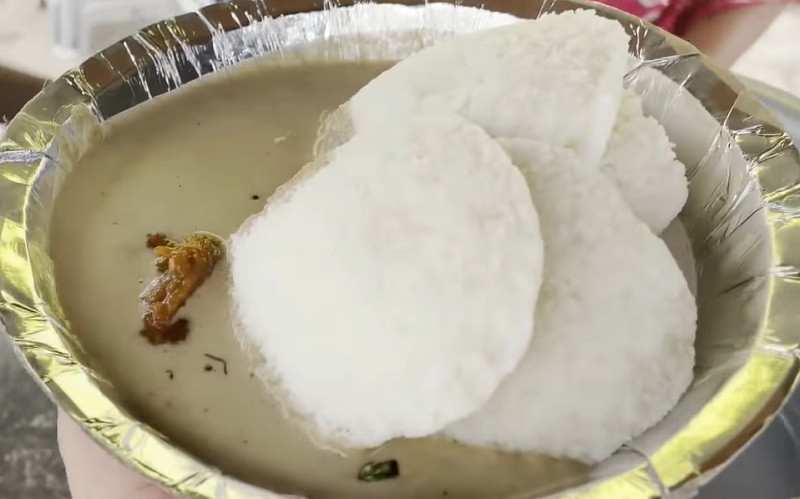
Idli is a steamed rice cake that is soft, fluffy, and mildly tangy in taste. It is a staple breakfast item in South India and is loved by people of all ages. To make idli, a batter is prepared by soaking rice and lentils in water for several hours. The soaked ingredients are then ground to a fine paste and fermented overnight. The fermented batter is then poured into greased idli molds and steamed until cooked. The resulting idlis are round, white, and spongy in texture. Idlis are usually served with a variety of accompaniments like sambar (a lentil-based vegetable stew), coconut chutney, and tomato chutney. They are typically enjoyed hot and are light on the stomach, making them a healthy and filling breakfast option. Idli is not only popular in Telangana but is also a beloved dish across India. It is known for its simplicity, nutritional value, and versatility.
Nihari
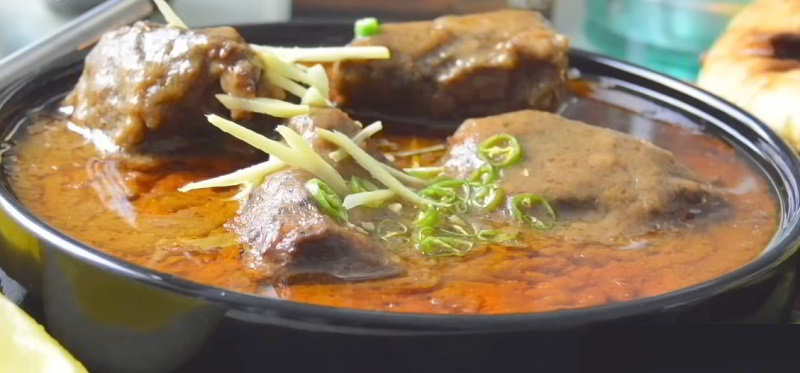
Nihari is a slow-cooked meat stew that is popular among meat lovers. The word "Nihari" originates from the Arabic word "Nahar," meaning morning, as it was traditionally eaten as a breakfast dish. The key ingredient in Nihari is tender meat, usually beef or lamb, which is slow-cooked for several hours in a rich gravy made from a blend of flavorful spices. The meat is cooked until it becomes incredibly tender and falls off the bone. The spices used in Nihari include ginger, garlic, cardamom, cinnamon, nutmeg, and cloves, giving it a distinctive aromatic flavor. Nihari is typically served with naan, a flatbread, and garnished with fresh coriander leaves, ginger slices, and lemon wedges. The dish has a thick and hearty texture, making it perfect for a satisfying meal.
Korma
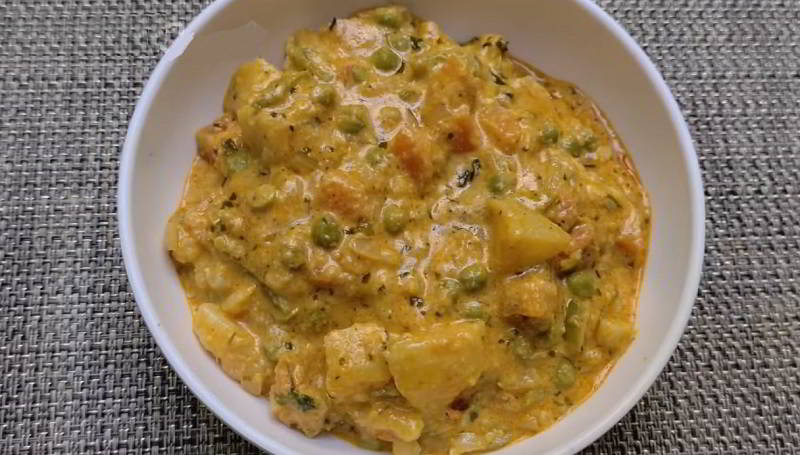
Korma is a mildly spiced curry dish made with a variety of ingredients including meat, vegetables, or even paneer (Indian cottage cheese). The dish typically involves slow-cooking the main ingredient with a mixture of yogurt, onions, ginger, garlic, and a medley of spices such as turmeric, coriander, cumin, cardamom, and cloves. This combination of spices creates a rich and creamy sauce that coats the main ingredient, making it tender and flavorful. The Korma dish is often served with steamed rice or Indian breads like roti or naan. It is a dish that is enjoyed by people of all ages and is often prepared for special occasions and festivals.
Kheer
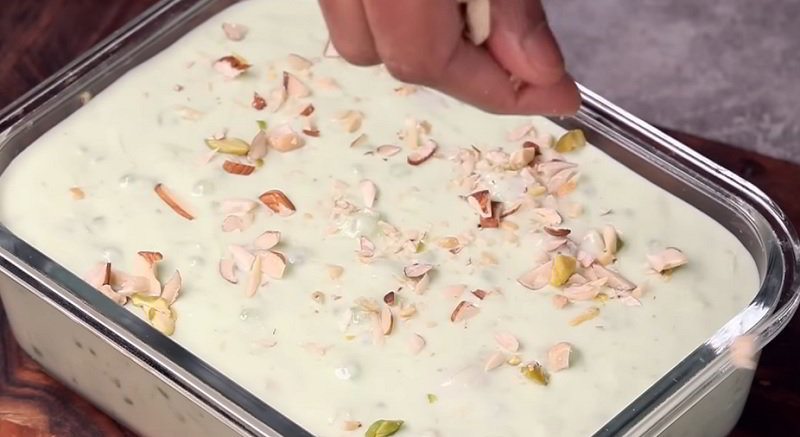
Kheer is a cherished dessert, often enjoyed during festivals, celebrations, and special occasions. The preparation typically starts with cooking fragrant Basmati rice in creamy milk until it reaches a soft and thick consistency. Sugar or jaggery is added to sweeten the kheer taste, and it may be flavored with cardamom for its warm and aromatic essence. Additionally, kheer may feature other ingredients such as cashews, almonds, and pistachios, adding a delightful crunch and nutty flavor to the creamy texture of the dessert. Sometimes, raisins are included for an extra burst of sweetness and texture. While the basic recipe remains similar to traditional kheer found elsewhere in India, the incorporation of local ingredients and flavors gives kheer its own distinct character, making it a beloved dessert enjoyed by people throughout.
Hyderabadi Biryani
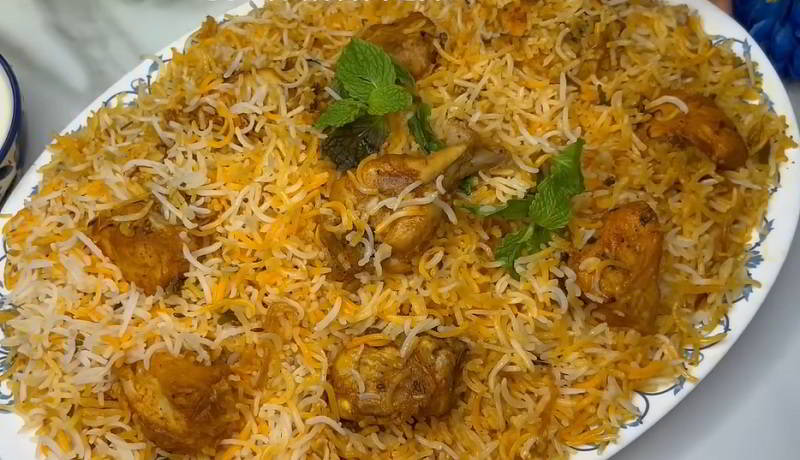
Hyderabadi Biryani stands as a culinary masterpiece in Indian cuisine, particularly celebrated in Hyderabad, Telangana. This fragrant rice dish boasts succulent marinated chicken or lamb, layered with aromatic basmati rice, caramelized onions, and a blend of spices. The meat is first marinated in yogurt, ginger-garlic paste, and a medley of spices, while the basmati rice is parboiled with whole spices. In the classic Hyderabadi method, the biryani is meticulously layered in a heavy-bottomed pot, alternating between meat and rice, with additions of fried onions, mint, and coriander. Sealed and slow-cooked in a process called "dum cooking," the flavors meld together beautifully. Garnished with fried onions, fresh cilantro, and sometimes boiled eggs, the biryani is served alongside raita and mirchi ka salan, creating a harmonious blend of tastes and textures. Hyderabadi Biryani epitomizes culinary tradition, cherished worldwide for its royal indulgence and exquisite flavor profile.
Paya
-1711956481.jpg)
Paya is a traditional South Indian dish made using trotters of lamb, goat, or sheep. This aromatic delicacy undergoes a slow cooking process, allowing the spices to meld and the gravy to thicken into a sumptuous consistency. To prepare Paya, the trotters are meticulously cleaned and simmered with a medley of spices and herbs over a low flame for hours, resulting in succulent and flavorful meat. This prolonged cooking also extracts the nutritious essence from the bones, enhancing its health benefits. Paya's spice blend includes ginger, garlic, red chili powder, turmeric, coriander, and garam masala, imparting both depth of flavor and a vibrant red hue to the gravy. Often served with hot naan or rice, Paya provides comforting warmth during winter, beloved for its hearty taste and tender meat.
Upma
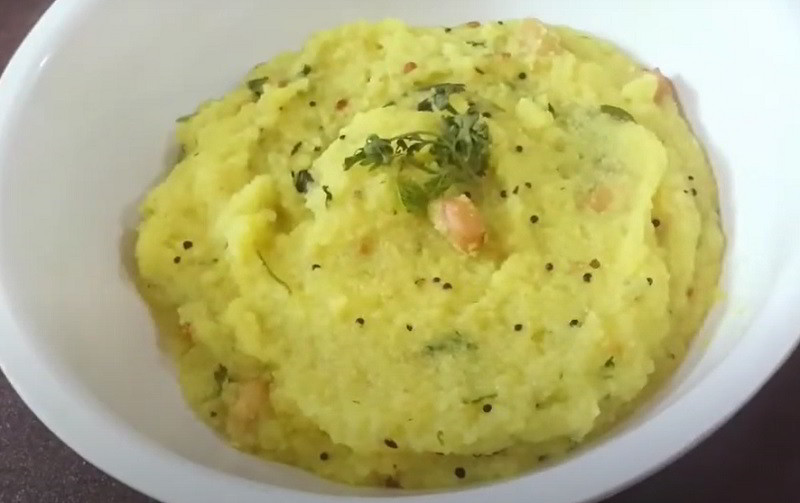
Upma is a beloved breakfast dish known for its simplicity and hearty flavors. Made from semolina cooked with a medley of vegetables and spices, it offers a comforting and nutritious start to the day. To prepare upma, semolina is dry-roasted until golden, while in a separate pan, mustard seeds, curry leaves, and vegetables are sautéed in oil or ghee. Water is then added to the vegetable mixture, followed by the roasted semolina, creating a thick and fluffy texture as it cooks. Garnished with fresh cilantro, upma is typically served hot and enjoyed with coconut chutney or pickle, adding a delightful contrast of flavors. Its versatility and wholesome nature make upma a favorite breakfast option cherished by many in Telangana and beyond.
Masala Dosa
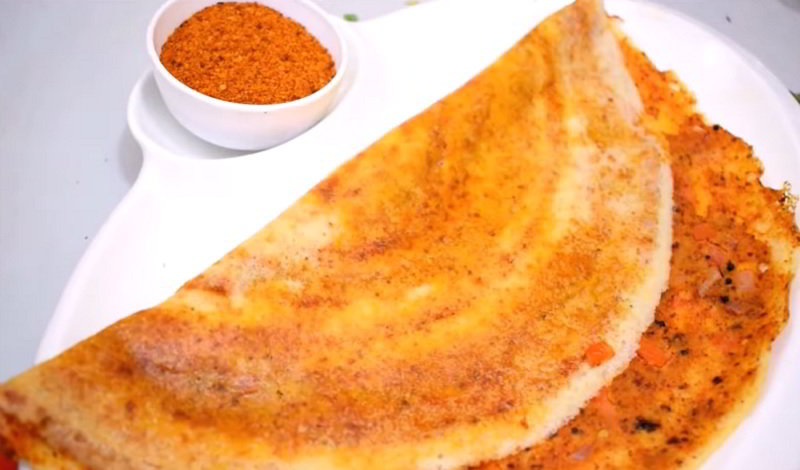
Masala dosa, a quintessential South Indian dish, features a thin and crispy crepe made from fermented rice and lentil batter, known as dosa, which is filled with a spiced potato mixture and served with various chutneys and sambar. To prepare masala dosa, the dosa batter is spread thinly on a hot griddle or tawa and cooked until golden and crisp. Meanwhile, a flavorful filling of mashed potatoes tempered with mustard seeds, curry leaves, turmeric, onions, and green chilies is prepared. This potato filling is then placed inside the dosa, which is folded over to encase the filling, creating a delicious and satisfying meal. Masala dosa is typically served hot, accompanied by coconut chutney, tomato chutney, and sambar, a flavorful lentil-based vegetable stew. Loved for its crispy exterior, creamy potato filling, and array of accompanying flavors, masala dosa is a beloved favorite in Telangana cuisine, enjoyed by people of all ages.
Rasam
-1711962432.jpg)
Rasam is a flavorful and aromatic soup that is a staple of South India. It showcases a tangy base derived from ingredients such as kokum, malabar tamarind (kudam puli), or tamarind, varying by region. Some recipes include a dal or lentil stock, enriching its texture and flavor. Complementing the tartness, a medley of spices and flavorings like black pepper, jaggery, cumin, chili powder, turmeric, tomatoes, mustard seeds, lemon, shallots, curry leaves, garlic, and coriander leaves are often employed. These ingredients not only enhance the taste but also lend complexity to the dish. Rasam, served as a soup or paired with rice, offers a delightful burst of flavors, ranging from tangy and spicy to subtly sweet.
Uttapam
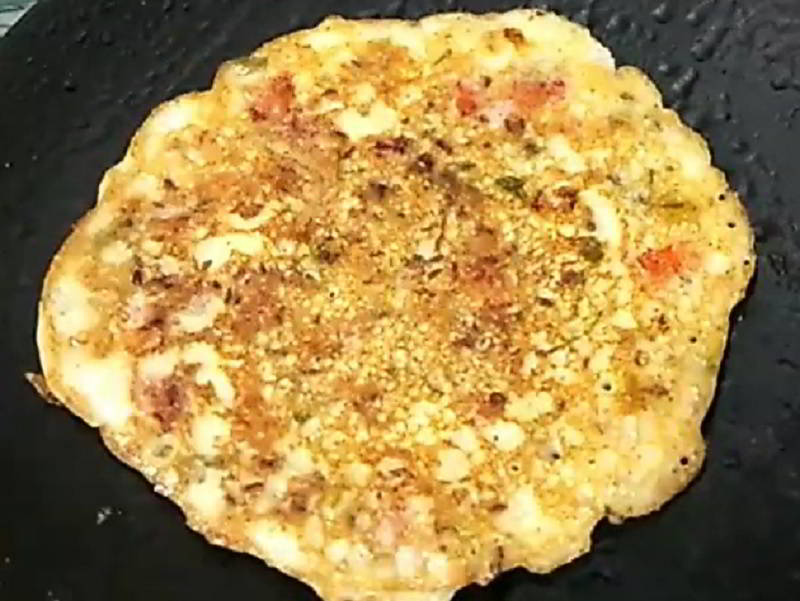
Uttapam is a type of dosa, but thicker and softer in texture. Made from fermented rice and lentil batter, uttapam is a versatile dish that can be customized with various toppings. Traditionally, uttapam is prepared by pouring the batter onto a hot griddle and spreading it into a round shape. It is then cooked until crispy on the outside and soft on the inside. The toppings are added on the uncooked side and pressed gently into the batter. Popular toppings include onions, tomatoes, green chilies, and cilantro. Uttapam is known for its tangy and slightly sour flavor, which comes from the fermentation process of the batter. It is usually served with coconut chutney or tomato chutney, along with sambar. Uttapam is a beloved breakfast or brunch option in Telangana, and its popularity has spread to other parts of India.
Dahi Vada
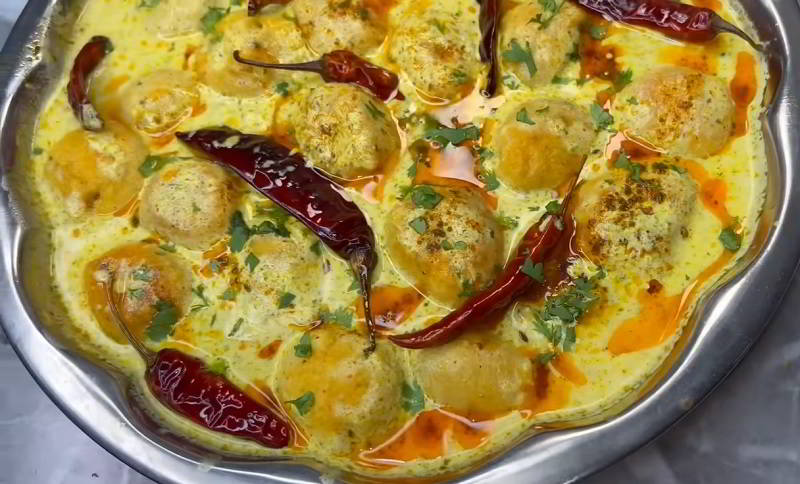
Dahi vada, also known as perugu vada in Telangana, is a beloved dish featuring lentil fritters immersed in creamy yogurt and an array of zesty chutneys. To prepare, urad lentils are soaked overnight, ground into a batter, and deep-fried until golden brown. Once fried, the vadas are soaked in water to soften before being submerged in thick, beaten yogurt. This soaking process ensures the vadas absorb the tangy yogurt, enhancing their flavor and texture. Additionally, the dish is often garnished with a variety of toppings such as crushed black pepper, coriander or mint leaves, shredded coconut, chili powder, chaat masala, green chilies, or pomegranate seeds. Dahi vada is cherished for its contrasting flavors and textures, making it a popular choice for festive occasions and social gatherings.
Hyderabadi Haleem
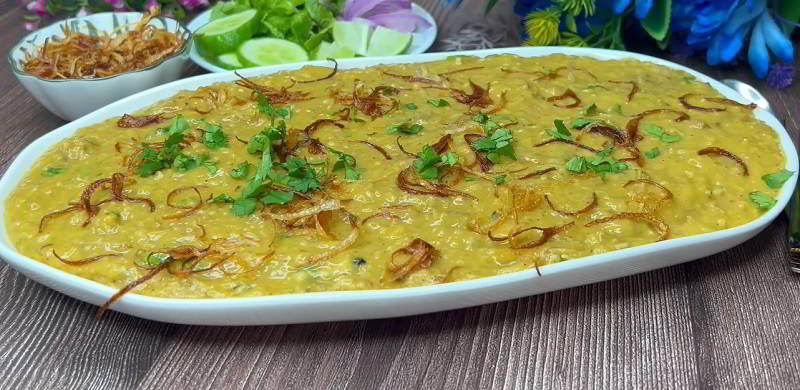
Hyderabadi haleem, a traditional delicacy hailing from Telangana, India, notably from Hyderabad, is a rich and aromatic dish cherished especially during the sacred month of Ramadan. This delectable creation involves slow-cooking a blend of lentils, meat (typically beef or mutton), and wheat grains, infused with a medley of spices and ghee (clarified butter). The preparation demands meticulous attention, requiring continuous stirring over several hours until the ingredients amalgamate into a creamy texture. This labor-intensive process yields a sumptuous dish where the lentils and meat meld seamlessly, offering a melt-in-your-mouth experience. Hyderabadi haleem is adorned with fried onions, fresh coriander leaves, and a squeeze of lemon juice, enhancing its aromatic flavors. Traditionally served hot alongside naan or roti, this dish enjoys widespread acclaim, not only within the local Muslim community but also globally, for its unparalleled taste and texture.
Shami Kebab
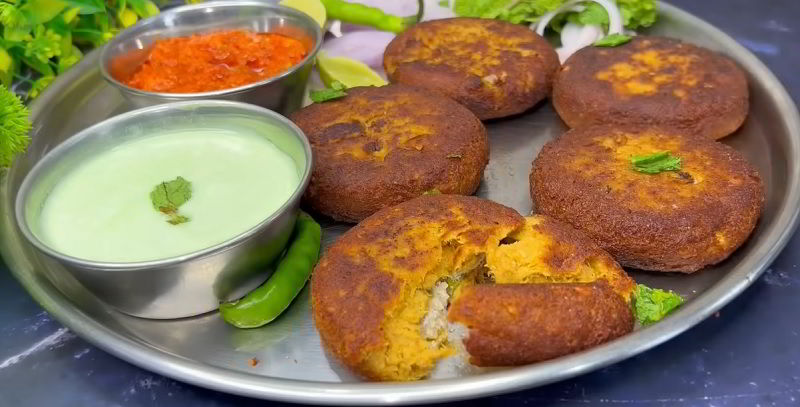
Shami kebab is celebrated for its exquisite flavors and tantalizing aroma. To prepare this delectable delicacy, beef or lamb is simmered with chickpeas and an array of whole spices such as garam masala, black pepper, cinnamon, cloves, and bay leaves until tender. Additionally, whole ginger and garlic are added to infuse the meat with a robust flavor. Onions, turmeric, chili powder, egg, fresh coriander, green chilies, and mint leaves may further enrich the kebab's taste profile. While some recipes incorporate garam masala powder, the cooked meat is meticulously ground to maintain a fibrous texture. Shaped into diamond or round patties, the kebabs are gently shallow-fried to achieve a crispy exterior. Renowned for its savory taste and delicate texture, Shami kebab is a cherished culinary delight in Telangana and beyond.
Zarda
-1711965836.jpg)
Zarda is a delightful dessert commonly enjoyed during festive occasions and special gatherings. Derived from the Persian word "zard," meaning yellow, Zarda is renowned for its vibrant color and rich flavors. The dish features fragrant long-grain rice cooked in ghee until fluffy, then combined with sugar syrup infused with saffron strands, imparting a golden hue. Alongside ghee and sugar, Zarda incorporates an assortment of nuts such as almonds, cashews, and pistachios, as well as aromatic spices like cardamom, rose water, and kewra water to enhance its taste. Garnished with nuts for added crunch and texture, Zarda tantalizes both the palate and senses with its vibrant colors and aromatic fragrance. Typically served hot, it can be relished on its own or paired with creamy desserts like kheer (rice pudding), offering a delightful sweet treat for all occasions.
Dopiaza
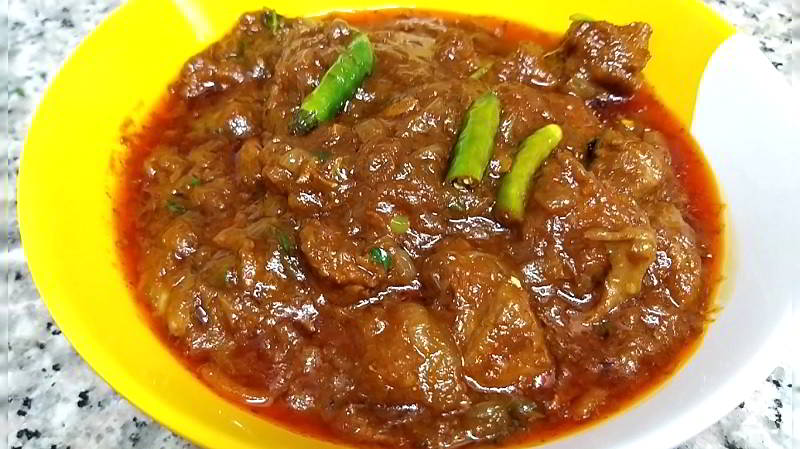
Dopiaza stands out for its decadent flavor profile and fragrant spices. Like numerous other Hyderabadi delicacies, incorporating a tangy element is crucial in dopiaza's preparation. Traditionally, raw mangoes are the souring agent of choice, although alternatives like lemon juice or cranberries are also viable options. The fundamental components of dopiaza encompass chicken or alternative meats, onions, ginger and garlic paste, and an assortment of whole hot spices, including black cardamoms, cloves, and peppercorns. Seasoned with salt and chili powder, dopiaza captures the essence of Hyderabadi culinary style, offering a symphony of flavors that delight the senses and leave a lasting impression.
Ariselu
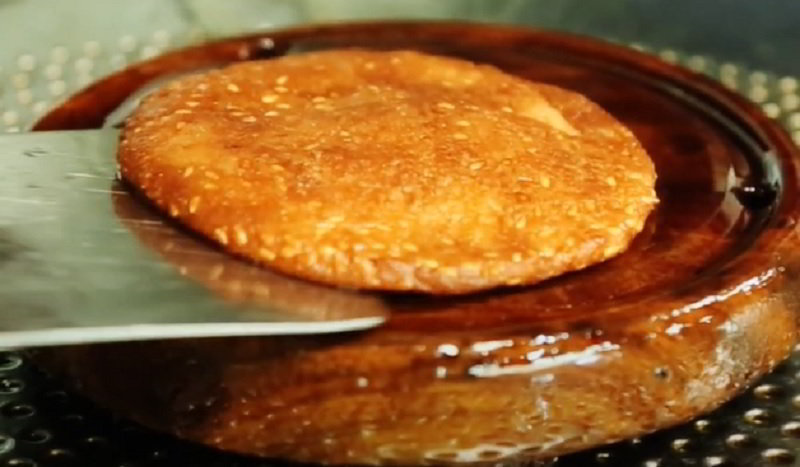
Ariselu is a traditional sweet delicacy originating from Telangana cuisine in India. These sweet treats are typically made during festive occasions and celebrations. Ariselu are crafted from a mixture of rice flour, jaggery (unrefined cane sugar), and sometimes a dash of cardamom for flavor. The dough is shaped into small, flat rounds and deep-fried until they achieve a golden-brown hue. The result is a crispy and sweet confection enjoyed by people of all ages. Ariselu hold a special place in Telangana's culinary traditions, symbolizing joy, prosperity, and togetherness during festive gatherings and cultural events. Their delightful taste and crunchy texture make them a beloved treat cherished by many in the region and beyond.
Pulihora
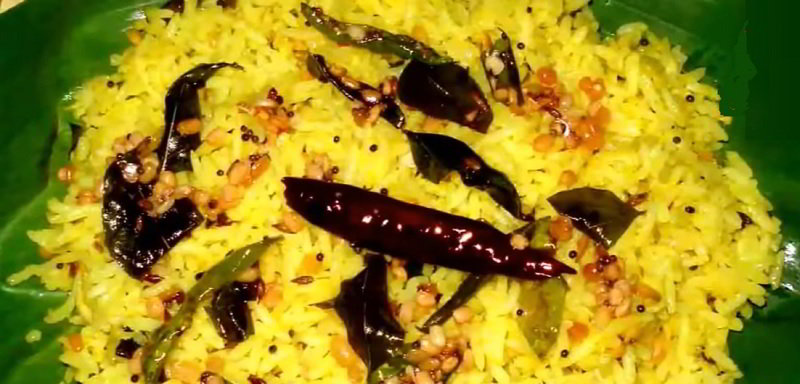
Pulihora, commonly referred to as tamarind rice, stands as a cherished and traditional delicacy popular in South India. This flavorful dish is concocted using souring agents like lemon, kokum, tamarind, or green mango, combined with an assortment of lentils, spices, jaggery, and peanuts cooked in oil. The mixture is then blended with cooked rice and adorned with fried curry leaves and turmeric for added aroma and flavor. In many households across southern India, families prepare Pulihora gojju (paste) or Pulihora podi (powder) in advance and store it for months, allowing for quick and convenient preparation. Pulihora holds significance during special occasions and festive days, often offered as prasadam (offering) in South Indian temples and homes during prayers.
Osmania Biscuit
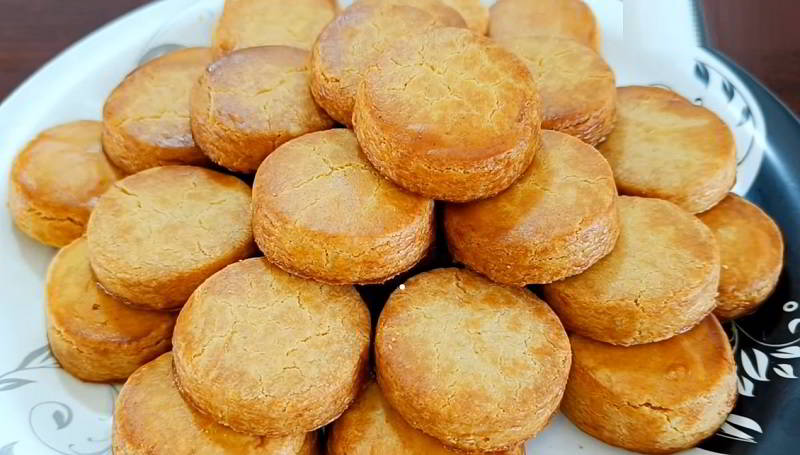
Osmania biscuit is a famous tea-time snack that originated in the city of Hyderabad, Telangana. The biscuit is named after the last Nizam of Hyderabad, Mir Osman Ali Khan, who was known for his love of these delectable treats. Osmania biscuits are known for their unique texture and taste. They are soft, buttery, and lightly sweetened, making them a perfect accompaniment to a cup of hot tea or coffee. The process of making Osmania biscuits involves a combination of flour, sugar, butter, and a hint of cardamom for added flavor. The dough is rolled out and cut into round shapes before being baked to perfection. The result is a melt-in-your-mouth biscuit that is loved by people of all ages. Osmania biscuits are not only popular in Telangana but also across various parts of India. They can be found in local bakeries, tea stalls, and even in some households.
Benne Dose
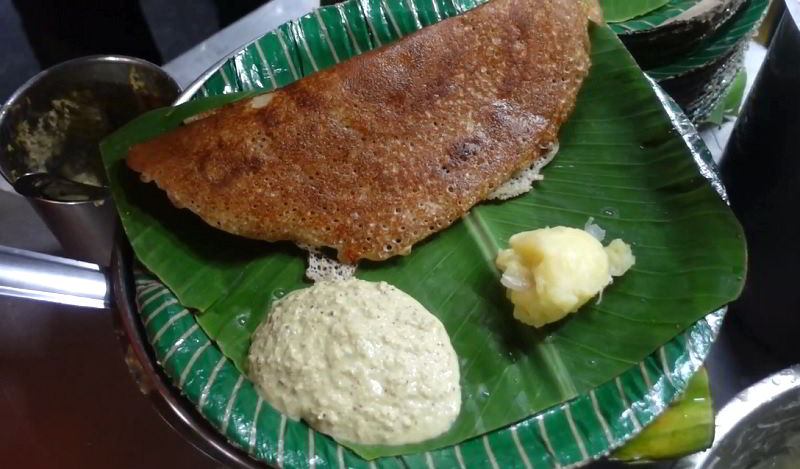
Benne dose boasts a distinctive flavor and texture that sets it apart from traditional dosas. The key ingredient distinguishing it is "benne," or butter, generously used in its preparation. To craft benne dose, a batter of rice and lentils is fermented overnight, then cooked into dosas on a hot griddle. These dosas are generously topped with butter, imparting a rich and indulgent taste. Served piping hot alongside various chutneys and sambar, benne dose delights with its crispy exterior and fluffy interior. The butter lends a creamy and savory essence, elevating the dish's overall flavor profile. Enjoyed primarily during breakfast or brunch, benne dose is adored by locals and tourists alike, offering a tantalizing taste of Telangana cuisine that shouldn't be missed.
Dalcha
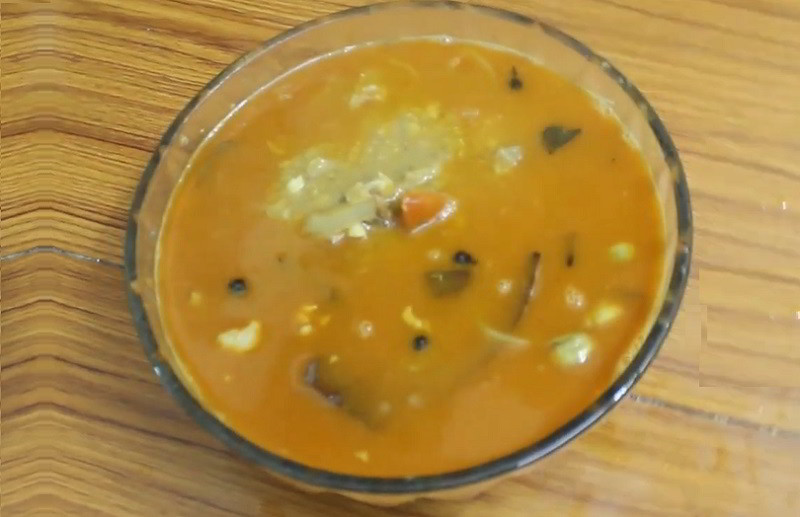
Dalcha, an Indian lentil-based stew originating from Hyderabad, Telangana, is a beloved culinary delight. Its core components include lentils, typically chana dal or tur dal, accompanied by a variety of vegetables or meats such as chicken or mutton, giving rise to variations like mutton dalcha. Bottle gourd stands as a prominent ingredient, adding to the stew's flavor and texture. Traditionally served alongside bagara khana, a rice dish, dalcha entices with its hearty and wholesome appeal. Whether enjoyed with rice or as a standalone dish, its rich flavors and nutritious ingredients make it a favorite in Telangana households and beyond, reflecting the region's vibrant culinary heritage.
Double Ka Meetha
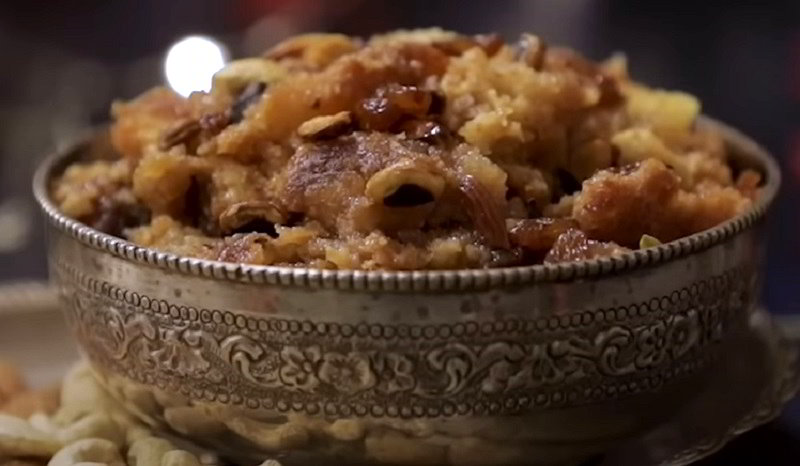
Double ka meetha also known as Shahi Tukra, is a revered dessert in Telangana cuisine. It is a delectable bread pudding crafted from slices of bread, milk, sugar, and ghee. The preparation begins by deep-frying bread slices in ghee until they achieve a crisp, golden-brown texture. These fried slices are then immersed in a sweetened milk mixture infused with fragrant cardamom and saffron, allowing them to absorb the flavors and soften. Once adequately soaked, the bread slices are adorned with roasted nuts such as cashews and almonds, alongside plump raisins, offering a delightful contrast of textures and flavors. Whether served warm or chilled according to preference, Double ka meetha presents a rich and indulgent dessert option ideal for commemorating special occasions and festive celebrations.
Mirchi Ka Salan
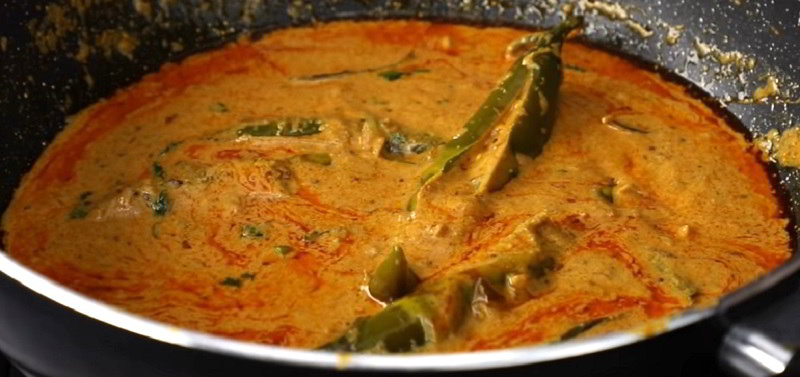
Mirchi ka salan is a tangy and spicy curry originating from Hyderabad, Telangana, celebrated for its unique flavor profile. The dish features long green chilies cooked in a rich and aromatic gravy made from peanuts, sesame seeds, coconut, tamarind, and a blend of spices. To prepare mirchi ka salan, the chilies are first slit and lightly fried until they develop a golden hue. Meanwhile, a paste is made from roasted peanuts, sesame seeds, and coconut, which is then simmered with tamarind water and spices like cumin, coriander, and red chili powder. The fried chilies are then added to this flavorful gravy and cooked until tender. Mirchi ka salan is typically served as a side dish with biryani or rice, offering a tantalizing contrast of heat and tanginess to complement the main course.
Chakna
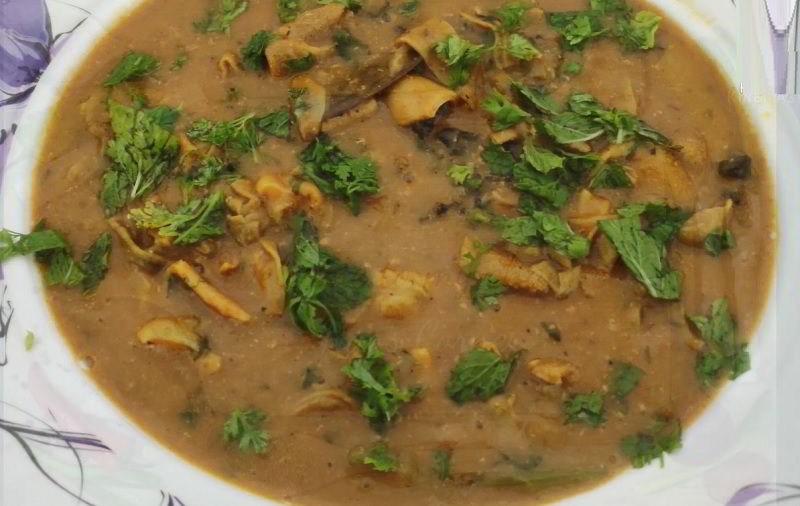
Chakna, a spicy stew originating from the Indian subcontinent, particularly among Hyderabadi Muslims. It's crafted from goat tripe and assorted animal digestive parts, often featuring chunks of liver and kidneys. While in Telangana, it's a cherished specialty, elsewhere in India, chakna generally denotes any snacks or finger foods enjoyed alongside alcoholic beverages. Across the country, it's a customary accompaniment to various liquors. The dish is prepared by simmering the ingredients in a flavorful gravy infused with spices, including cumin, coriander, and chili powder, alongside aromatic garlic, ginger, and onions. Served piping hot, garnished with fresh cilantro and a squeeze of lemon, chakna offers a bold and hearty experience, ideal for those seeking a flavorful companion to their drinks.
Khubani-ka-Meetha
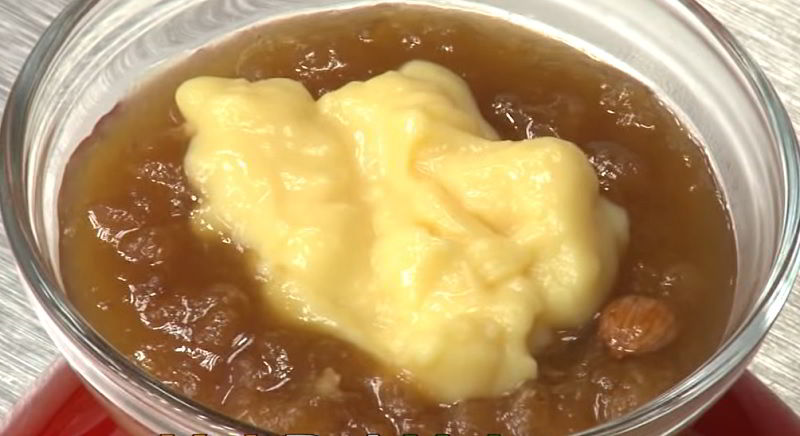
Khubani-ka-Meetha is a delightful and indulgent sweet treat. This rich delicacy is crafted using dried apricots, sugar, and an array of aromatic spices. To prepare, dried apricots undergo an overnight soak to achieve a softened texture. Subsequently, they are simmered in sugar syrup until tender, allowing them to release their natural sweetness. The dish is elevated with the addition of fragrant cardamom, saffron, and rose water, imparting a delightful aroma and flavor. Garnished with slivered almonds or pistachios, Khubani-ka-Meetha is often savored as a dessert following a hearty Telangana meal or during special occasions and festivals, offering a memorable culinary experience that tantalizes the taste buds.
Bagara Khana
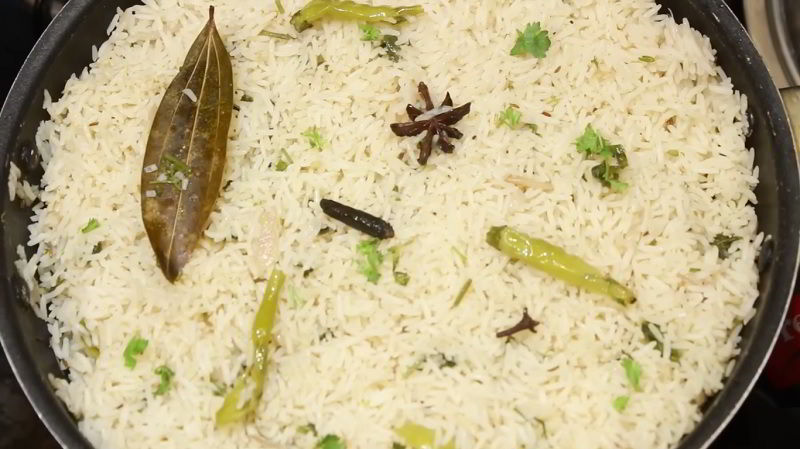
Bagara Khana or Bagara annam, a spiced rice delicacy hailing from Hyderabad, Telangana, India, is a culinary delight cherished for its rich flavors. "Bagar," meaning tempering, distinguishes this dish, which is essentially a plain biryani recipe devoid of vegetables or masala powders. Long-grained rice, dark spices, and green chilies are the essential ingredients that lend bagara rice its distinctive taste. This aromatic rice dish serves as an ideal accompaniment to spicy curries such as baghara baingan or dalcha, complementing their flavors perfectly. Bagara annam exemplifies the culinary heritage of Telangana cuisine, offering a tantalizing blend of spices and textures that tantalize the taste buds. Enjoyed during festive occasions, gatherings, or as a comforting meal, bagara annam adds a touch of culinary delight to any dining experience.
Neer Dosa
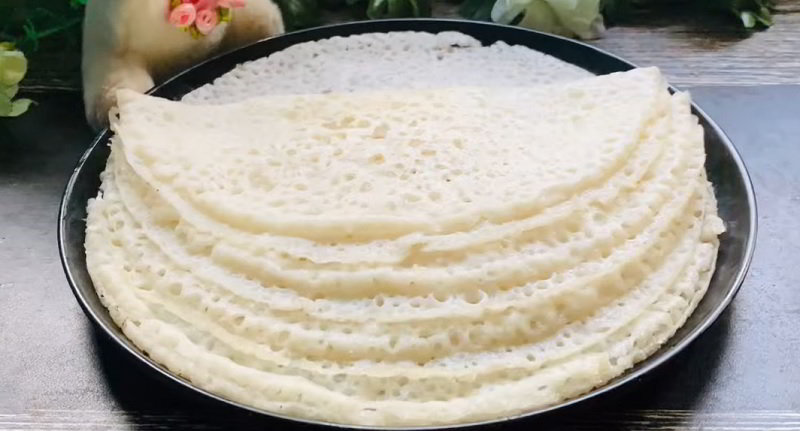
Neer dosa is a popular South Indian delicacy originating from Karnataka, known for its light and thin texture. The name "neer" translates to "water" in Kannada, referring to the watery consistency of the batter used to make these dosas. To prepare neer dosa, a batter is made by blending soaked rice with water until it forms a thin and smooth consistency. Unlike traditional dosa batter, neer dosa batter does not require fermentation. The batter is then poured onto a hot griddle in a circular motion, creating thin, crepe-like dosas that cook quickly. Neer dosa is typically served with coconut chutney, sambar, or a spicy curry, making it a refreshing and delicious meal option for breakfast or as a light snack.
Maghaz
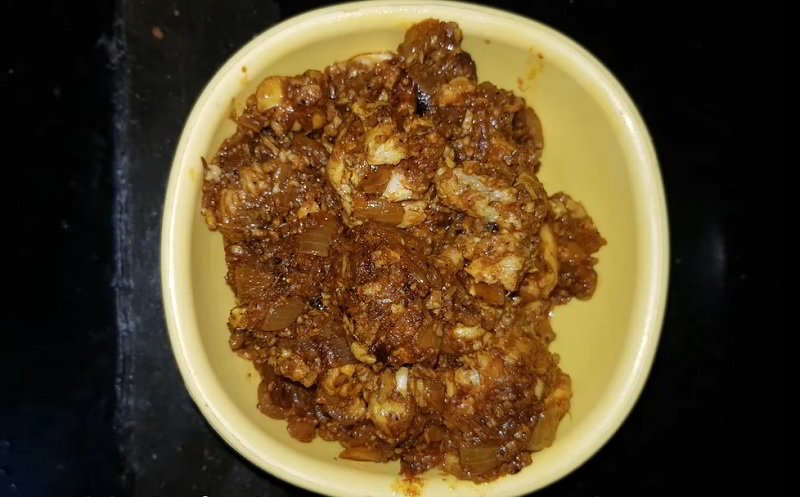
Maghaz features tender pieces of lamb or goat brain cooked in a rich and aromatic gravy. The name "maghaz" translates to "brain" in Urdu, indicating the primary ingredient of the dish. To prepare maghaz, the brain of a cow, goat or sheep, is first cleaned thoroughly and then cooked with a blend of spices, including cumin, coriander, turmeric, chili powder, and ginger-garlic paste. Onions, tomatoes, and yogurt are often added to create a flavorful gravy. The dish is typically garnished with fresh cilantro and served hot with naan or rice. Despite its unique ingredient, maghaz is cherished for its rich taste and creamy texture, making it a favorite among meat lovers in Telangana and beyond.
Pachadi
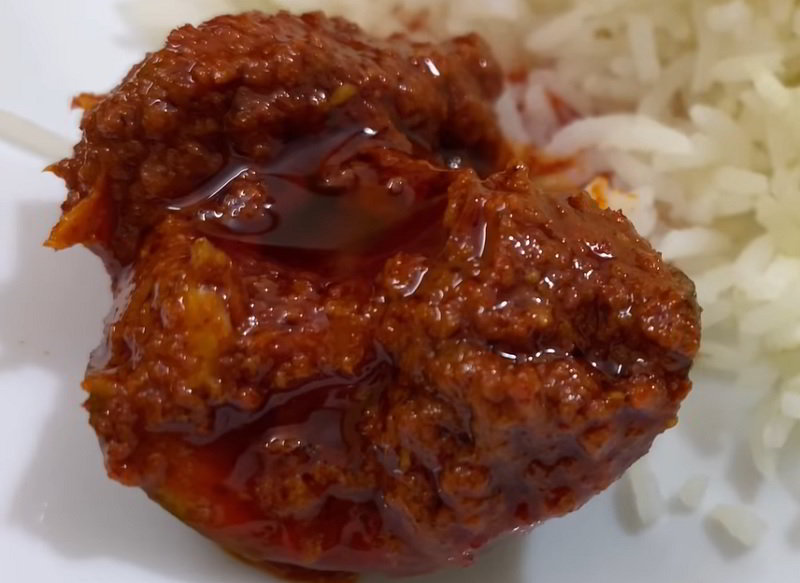
Pachadi, a staple of South Indian cuisine, is a traditional fresh pickle served as a side dish. The term "pachadi" loosely translates to a plant that has been pounded or crushed, reflecting its preparation method. In Telangana, pachadi features vegetables like bottle gourd, aubergine, and okra. These vegetables are cooked until al dente and then ground with a blend of roasted red or green chilies, fenugreek seeds, and mustard seeds. This mixture creates a flavorful paste that is both spicy and tangy, enhancing the natural taste of the vegetables. Pachadi adds a refreshing and zesty element to meals, complementing the main dishes with its vibrant flavors and textures.
Manda Roti
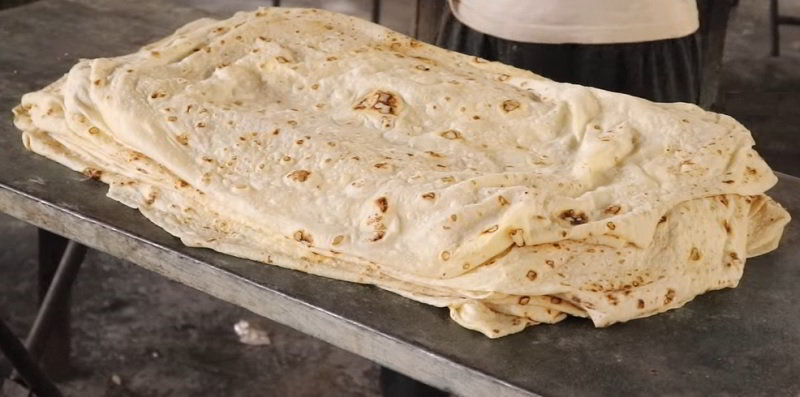
Manda roti is a traditional roti, celebrated for its thin and pliable nature, often served folded like a handkerchief. Typically made with a blend of atta flour and maida flour, this roti is cooked on the convex side of an Indian wok (typically kadahi). The dough, a combination of flours, is meticulously flattened and cooked until it achieves a golden hue and perfect consistency. This delicate roti complements a variety of Telangana dishes, offering a harmonious blend of flavors and textures. Its unique preparation method and distinctive appearance enhance its appeal, establishing manda roti as a beloved favorite not just in Telangana but all over India.
Hyderabadi Marag
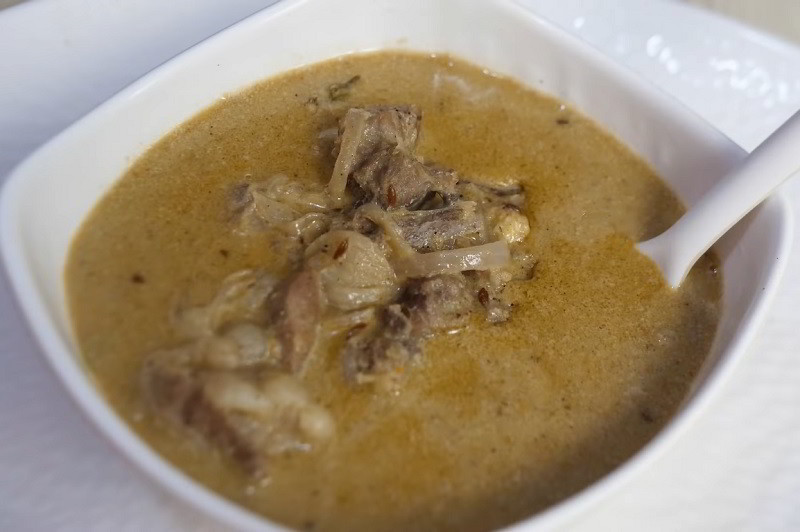
Hyderabadi marag is a rich and aromatic soup that originates from the culinary traditions of Hyderabad, Telangana. This flavorful soup is typically made with tender mutton or lamb pieces cooked in a broth infused with a blend of spices, including cloves, cardamom, cinnamon, and bay leaves. Additionally, ingredients like ginger, garlic, onions, and yogurt are often added to enhance the depth of flavor. The soup is simmered slowly until the meat becomes tender and infused with the spices, resulting in a fragrant and comforting dish. Hyderabadi marag is commonly served as an appetizer or starter during special occasions, festivals, and gatherings, delighting diners with its rich taste and aromatic essence, embodying the culinary heritage of Hyderabad.
Sarva Pindi
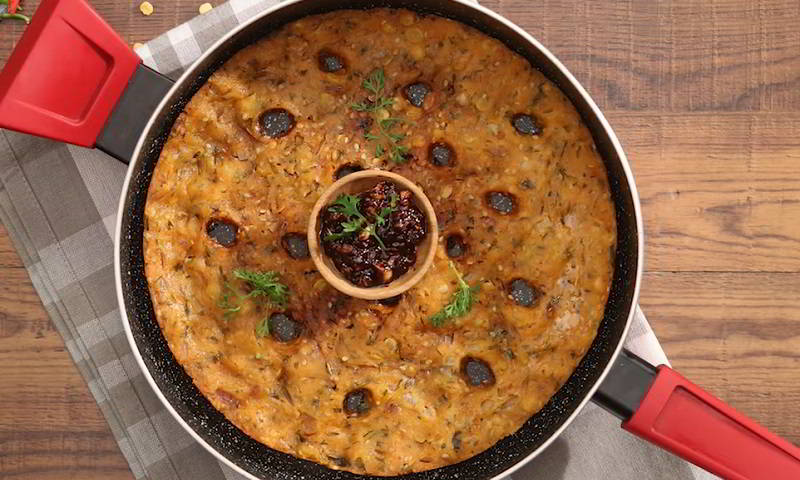
Sarva Pindi, a traditional savory pancake hailing from the Telangana region of India, is crafted from a blend of rice flour, chana dal, peanuts, sesame seeds, and assorted spices. This dish delights with its crispy texture and an explosion of flavors. To prepare Sarva Pindi, the ingredients are combined to form a thick batter, which is then thinly spread onto a hot griddle or pan. The pancake is cooked until achieving a crisp, golden-brown finish on both sides. Typically served piping hot, Sarva Pindi pairs excellently with chutney or yogurt on the side. A beloved snack or breakfast choice in Telangana households, it is celebrated for its distinct taste and mouthwatering texture, adding a delightful culinary experience to the region's gastronomic heritage.
Bonda
-1712032159.jpg)
Bonda is a popular snack, known for its crispy exterior and delicious filling. This savory dish is made by deep-frying a batter made of gram flour and spices. The filling of the bonda can vary but is typically made of mashed potatoes, onions, green chilies, and a blend of aromatic spices like cumin, turmeric, and coriander. The process of making bonda involves shaping the batter and filling it into small balls, which are then carefully dropped into hot oil until they turn golden brown and crispy. The end result is a mouthwatering snack that is crispy on the outside and soft and flavorful on the inside. Bonda is often enjoyed with a side of coconut chutney or tomato ketchup, making it a perfect accompaniment to a cup of hot tea or coffee. It is commonly served as an evening snack or as a popular street food item.
Sakinalu
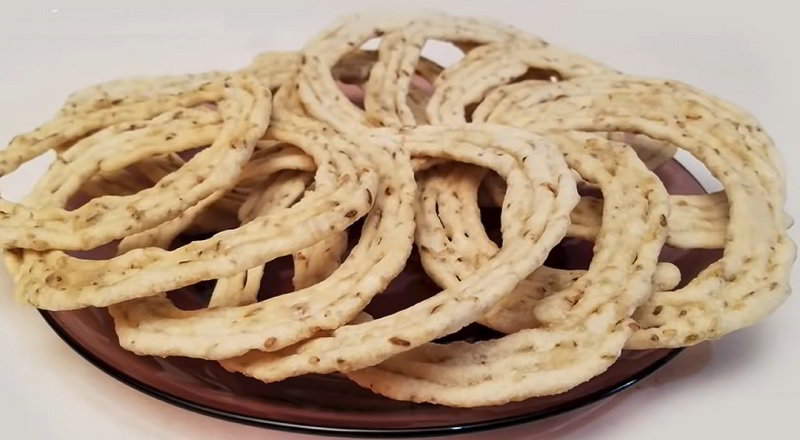
Sakinalu is a crunchy snack, especially popular in the northern region of Telangana. It is a crispy and savory dish that is made from rice flour and spices. The preparation of sakinalu begins with soaking rice in water for a few hours and then grinding it into a fine paste. The rice paste is then mixed with spices like sesame seeds, cumin seeds, ajwain (carom seeds), red chili powder, and salt. This mixture is kneaded into a smooth dough and then rolled into thin cylindrical shapes. These cylindrical rolls are then deep-fried in hot oil until they turn golden brown and crispy. The end result is a delightful snack with a crunchy texture and a burst of flavors from the spices. Sakinalu is usually enjoyed with a cup of hot tea or coffee and is often served during festive occasions or as a tea-time snack.
Lukhmi

Lukhmi is a beloved Hyderabadi snack often paired with a steaming cup of tea. This delectable treat features a small, savory pastry filled with spiced minced meat. The process begins with rolling out thin pastry dough, which is then generously stuffed with a flavorful mixture of minced meat, onions, aromatic spices, and fragrant herbs. Carefully sealed, the Lukhmi takes on its characteristic square or rectangular shape. Deep-fried to a golden brown crispiness, it boasts a delightful texture and rich taste. The blend of tender meat and aromatic spices creates a symphony of flavors with every bite. Typically served alongside a tangy and spicy mint chutney, Lukhmi offers a perfect balance of savory and zesty notes, making it a favorite indulgence for any occasion.
Baghaar-e-Baingan
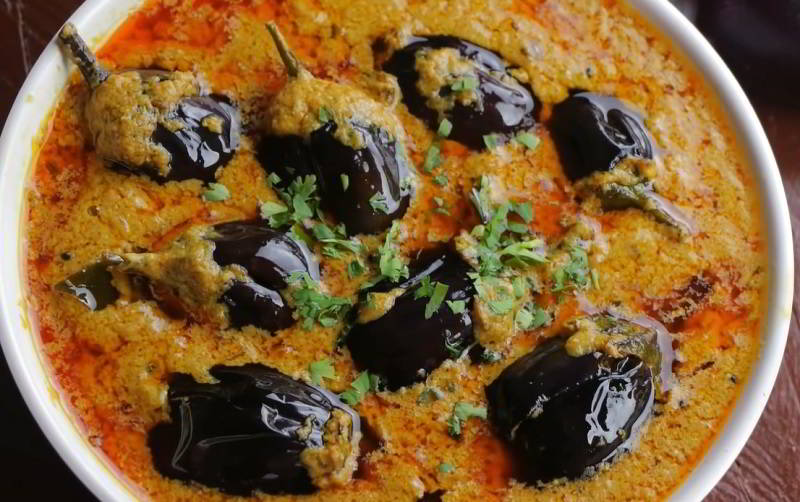
Baghaar-e-baingan, a traditional delicacy hailing from Hyderabadi cuisine in India, boasts rich flavors and a distinctive preparation technique. The name itself, translating to "tempered eggplant," aptly captures its essence. To prepare this dish, eggplants are initially roasted until tender, then simmered in a spicy and tangy gravy. The hallmark of Baghaar-e-baingan lies in its tempering process, where whole spices like mustard seeds, cumin seeds, and curry leaves are fried in hot oil before being drizzled over the cooked eggplants, imparting a burst of aromas and flavors. The gravy, typically comprising tamarind paste, onions, tomatoes, and an array of spices, adds depth to the dish. Baghaar-e-baingan is often paired with steamed rice or roti, making it a popular choice for festive gatherings and family feasts.
Poornalu
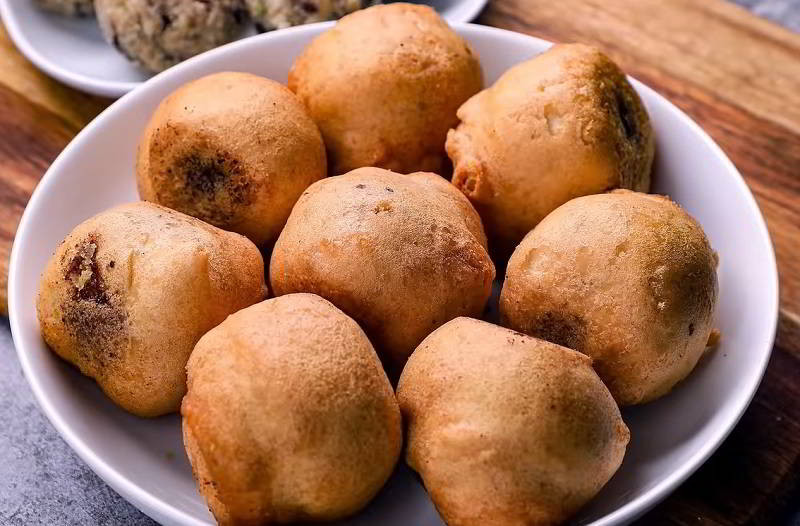
Poornalu, also referred to as Poornam, stands as a cherished sweet treat loved by many. Esteemed for its presence during festivals and celebratory occasions, this dessert boasts a delightful combination of flavors. To craft Poornalu, a filling is prepared using jaggery, grated coconut, cardamom powder, and roasted sesame seeds. This flavorful mixture is then enclosed within a dough made from rice flour. Carefully shaped into small balls, the dough is deep-fried until it achieves a golden-brown hue and a crispy texture. Poornalu are renowned for their unique taste and texture—crunchy on the outside and filled with a sweet, aromatic blend of flavors within. The amalgamation of jaggery, coconut, and cardamom creates an irresistible taste that appeals to individuals of all ages.
Dahi Chutney
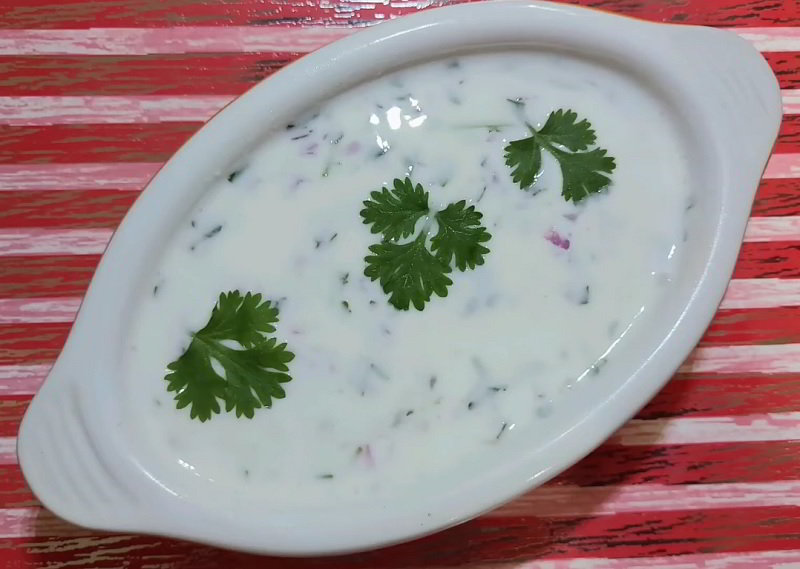
Dahi chutney combines the refreshing qualities of yogurt with the tangy and spicy flavors of traditional chutney. To prepare this delightful accompaniment, fresh yogurt is blended with a variety of ingredients such as mint leaves, cilantro, green chilies, garlic, ginger, and spices like cumin and salt. The mixture is then whisked until smooth and creamy, resulting in a flavorful and cooling chutney with a hint of heat. Dahi chutney is often served alongside savory snacks like samosas, pakoras, or kebabs, adding a burst of flavor and a cooling contrast to the spicy dishes. It is a versatile condiment that enhances the taste of a wide range of dishes, making it a favorite among Telangana food enthusiasts.
Pathar-ka-Gosht
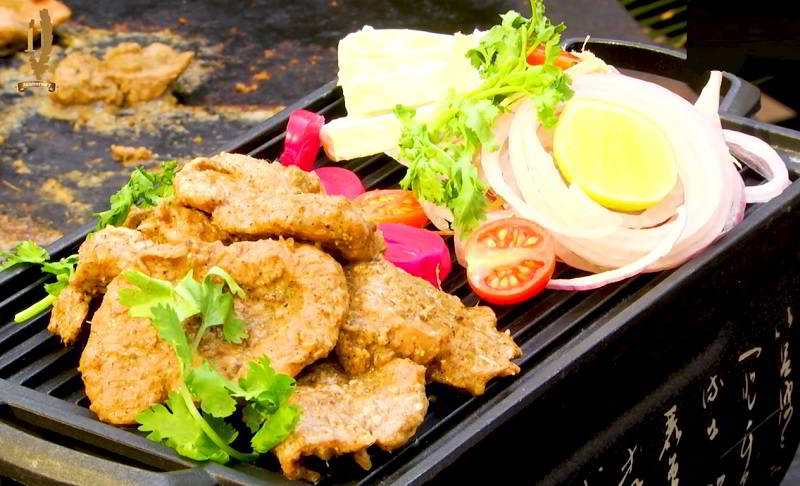
Pathar-ka-Gosht is a unique dish that involves cooking marinated meat on a hot stone (pathar), infusing it with smoky flavors. To prepare this dish, chunks of meat, often lamb or goat, are marinated with a blend of spices, yogurt, ginger, garlic, and sometimes tenderizers like raw papaya paste. The marinated meat is then placed on a preheated stone slab and cooked over hot coals or a charcoal grill. As the meat cooks, it absorbs the heat from the stone, resulting in a tender and succulent texture with a distinct smoky aroma. Pathar-ka-Gosht is often served with naan or roti and accompanied by mint chutney and sliced onions. This unique cooking method gives the dish its signature flavor and makes it a popular choice for special occasions and celebrations in Telangana households.
Ankapur Chicken
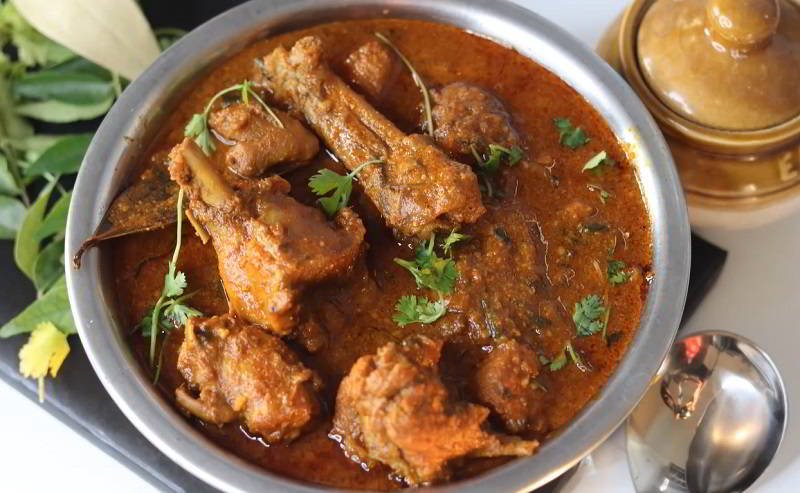
Ankapur chicken is a specialty dish originating from the Ankapur village in the Telangana region of India. This unique chicken preparation is renowned for its distinctive flavors and cooking method. To prepare Ankapur chicken, tender pieces of chicken are marinated with a blend of spices, including red chili powder, turmeric, coriander, cumin, and garlic. The marinated chicken is then cooked in an aluminum utensil over a slow fire, allowing the flavors to meld together and the chicken to become tender and succulent. The dish is typically garnished with fresh cilantro and served hot with rice or roti. Ankapur chicken is cherished for its rich taste and is often enjoyed during festive occasions and family gatherings in Telangana households.
Kulfa Gosht
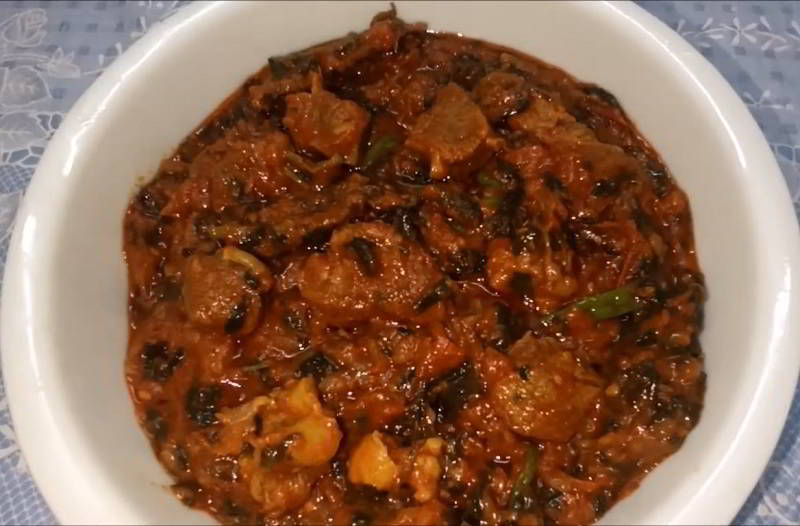
Kulfa gosht is a traditional meat dish that originates from the Telangana region of India. This flavorful dish features tender pieces of meat, typically lamb or goat, cooked with kulfa leaves, also known as purslane leaves. To prepare kulfa gosht, the meat is first marinated with a blend of spices, including coriander, cumin, turmeric, red chili powder, ginger, and garlic. The marinated meat is then cooked slowly with the kulfa leaves until it becomes tender and infused with the flavors of the spices and greens. The result is a hearty and aromatic dish with a unique taste that is enjoyed with rice or bread. Kulfa gosht is often served during special occasions and gatherings, showcasing the rich culinary heritage of Telangana cuisine.
Hyderabadi Pickle
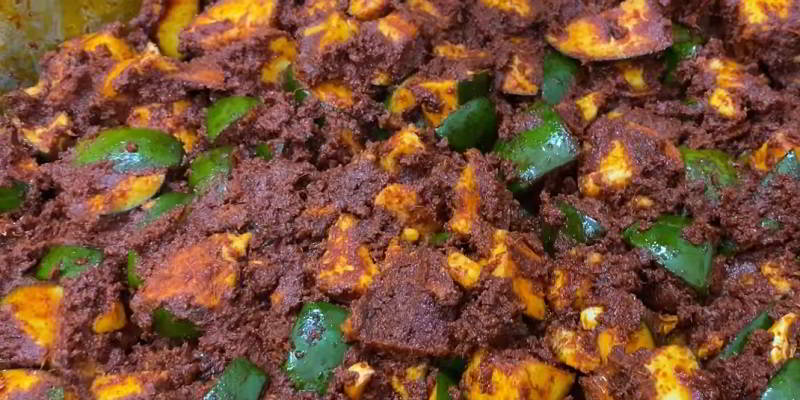
Hyderabadi pickle is a traditional condiment originating from the culinary traditions of Hyderabad. This pickle is known for its bold and tangy flavors, often made with a variety of ingredients such as raw mangoes, lemon, green chilies, and a blend of aromatic spices like mustard seeds, fenugreek seeds, cumin, and turmeric. The ingredients are mixed together and preserved in oil or vinegar, allowing the flavors to mature over time. Hyderabadi pickle adds a punch of flavor to meals and is commonly served as a side dish with rice, roti, or other main courses. It is a staple in Hyderabadi cuisine, cherished for its spicy and tangy taste that complements a wide range of dishes.
Pashti
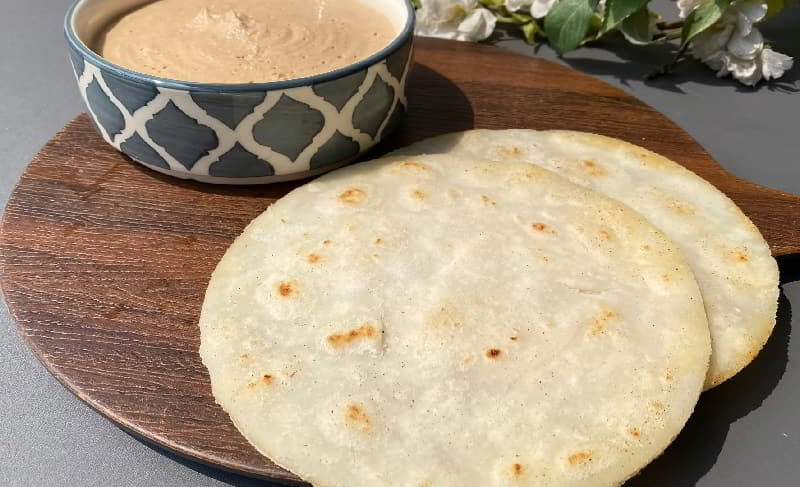
Pashti, a type of flatbread prevalent in the Southern Indian subcontinent, is typically crafted from rice flour and cooked on a skillet with ghee or cooking oil. The process of making pashti involves kneading rice flour with hot water to avoid lump formation, followed by rolling out the dough with a rolling pin and cutting it into circles using a plate or jar top. This flatbread is commonly accompanied by chutneys, often peanut-based (known as Phalli Ki Chutney), or served alongside curry dishes. Pashti serves as a versatile accompaniment, adding a delightful texture and flavor to meals, and it reflects the culinary diversity and traditions of Southern India.
Roat
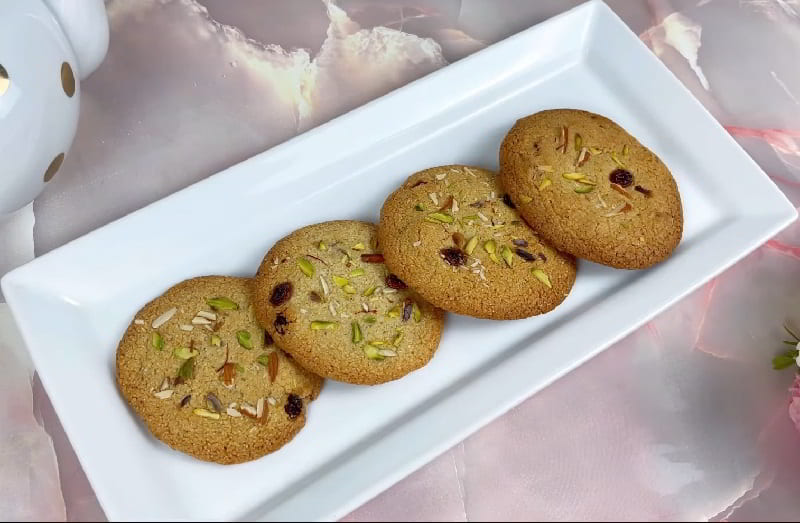
Roat, also affectionately known as Dum ke Roat, is a beloved sweet treat hailing from Hyderabad. Its popularity peaks during the month of Muharram, the first month of the Islamic calendar. This delightful confection is crafted by blending semolina, refined flour, ghee, dried fruits, saffron, and raisins into a dough, creating a rich and aromatic mixture. Once prepared, the dough is carefully baked in the oven to perfection. The result is a decadent dessert boasting a golden hue and a tantalizing aroma. Roat captivates the senses with its delightful combination of textures and flavors, offering a satisfying indulgence for those with a sweet tooth. Its association with cultural festivities adds to its allure, making it a cherished treat enjoyed by many in Hyderabad and beyond.
Talakaya Kura
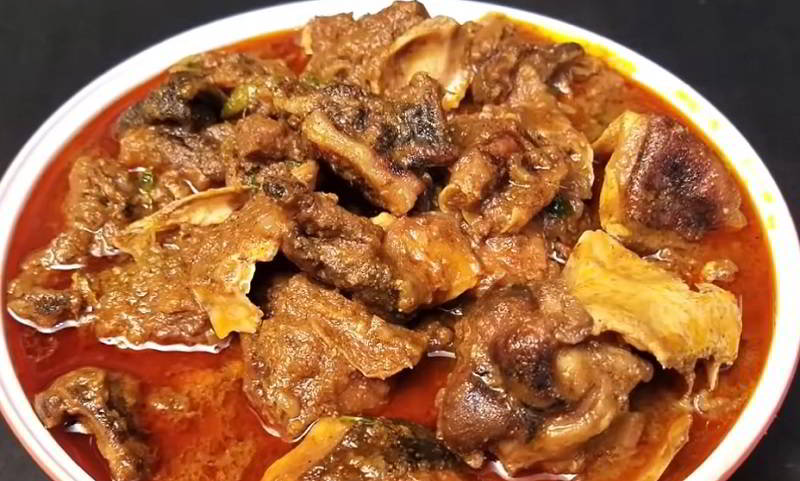
Talakaya Kura is a creative creation of Telangana cuisine, specifically known for its rich and flavorful preparation using goat's head. The dish involves cooking the goat's head with a variety of aromatic spices and herbs until tender and succulent. Common spices used in Talakaya Kura include cumin, coriander, turmeric, red chili powder, cloves, cinnamon, and cardamom, among others. The goat's head is typically simmered slowly in a thick gravy made from onions, tomatoes, and tamarind pulp to enhance the flavor. Talakaya Kura is often served hot with steamed rice or traditional bread like roti or naan, making it a hearty and satisfying meal. This dish is beloved in Telangana households for its rich taste and comforting warmth, making it a popular choice for special occasions and gatherings.
Khatti Dal
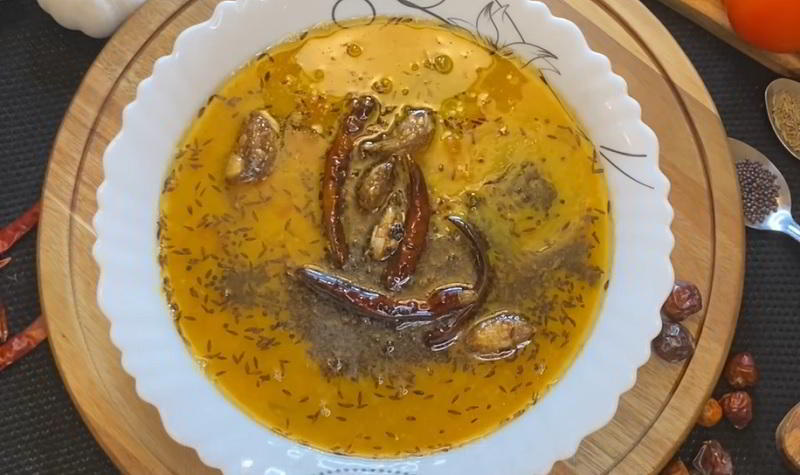
Khatti Dal is a dish made from pigeon peas (toor dal) and is cooked with a unique blend of spices and tamarind, giving it its distinct sour taste. To make Khatti Dal, the pigeon peas are cooked until soft and then tempered with mustard seeds, cumin seeds, dried red chilies, and curry leaves. The dal is then seasoned with turmeric powder, red chili powder, and salt, enhancing its flavor. Tamarind pulp is then added to the dal, giving it its characteristic tangy taste. This dish is often enjoyed with steamed rice or roti and is a staple in Telangana households.
Tala Huwa Gosht
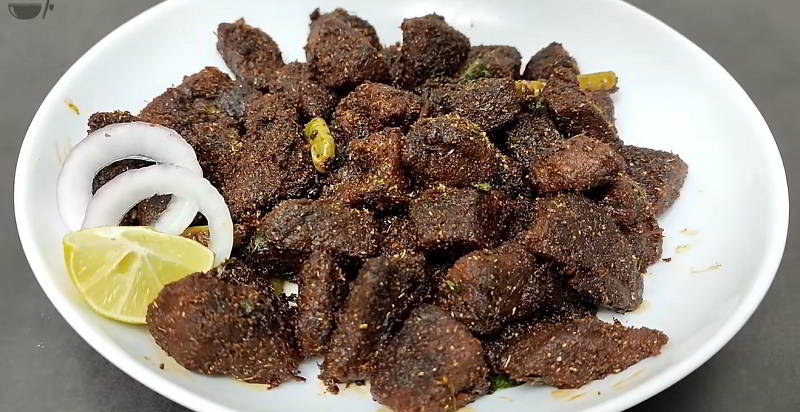
Tala Huwa Gosht is a delectable meat dish celebrated for its distinctive cooking technique and robust flavors. This dish features tender lamb or goat pieces shallow-fried to a golden-brown perfection, ensuring a juicy and flavorful interior. Prior to frying, the meat is marinated with a blend of spices including cumin, coriander, turmeric, red chili powder, ginger, and garlic, enriching its taste profile. Cooked in hot oil or ghee until achieving desired crispiness, Tala Huwa Gosht is often paired with Mithi Dal or Khatti Dal and served as a main course alongside rice, roti, or naan. Fresh herbs and lemon wedges are commonly used as garnish, adding a refreshing touch to this delectable dish.
Golichina Mamsam
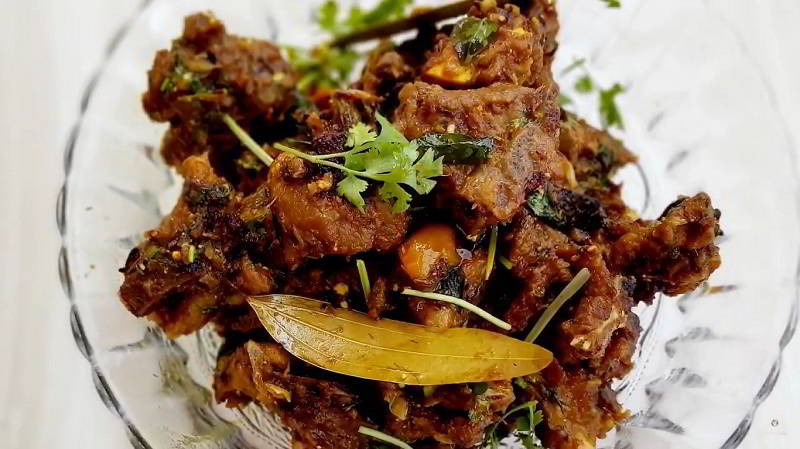
Golichina Mamsam is a traditional dish hailing from the Telangana region of India, known for its bold flavors and unique preparation method. In this dish, tender pieces of mutton or lamb are marinated with a blend of spices, including red chili powder, turmeric, coriander, cumin, ginger, and garlic. The marinated meat is then shallow-fried until it achieves a crispy exterior while remaining tender and juicy inside. Golichina Mamsam is typically served hot as a main course dish, accompanied by rice, roti, or naan. This dish is cherished for its rich taste and is often enjoyed during special occasions and gatherings in Telangana households.
Kairi Ka Do Pyaza
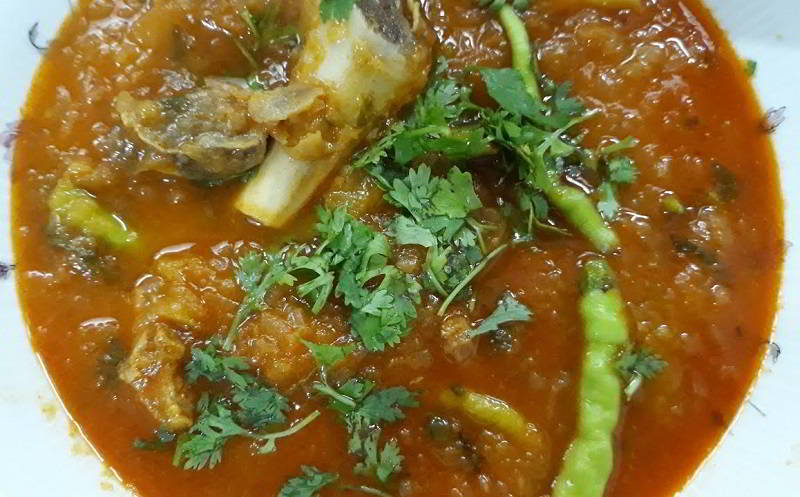
Kairi ka Do Pyaza is a tangy and flavorful dish, renowned for its unique combination of raw mangoes and onions. In this dish, thinly sliced raw mangoes and onions are sautéed together with a blend of spices, including cumin seeds, mustard seeds, red chili powder, turmeric, and salt, until they become tender and aromatic. The name "Do Pyaza" refers to the use of double the amount of onions, adding sweetness and texture to the dish. Kairi ka Do Pyaza is typically served as a side dish with rice or roti, complementing the main course with its refreshing and tangy flavor profile. This dish is particularly popular during the summer months when raw mangoes are in season, offering a delightful culinary experience.
Tamate Ka Kut
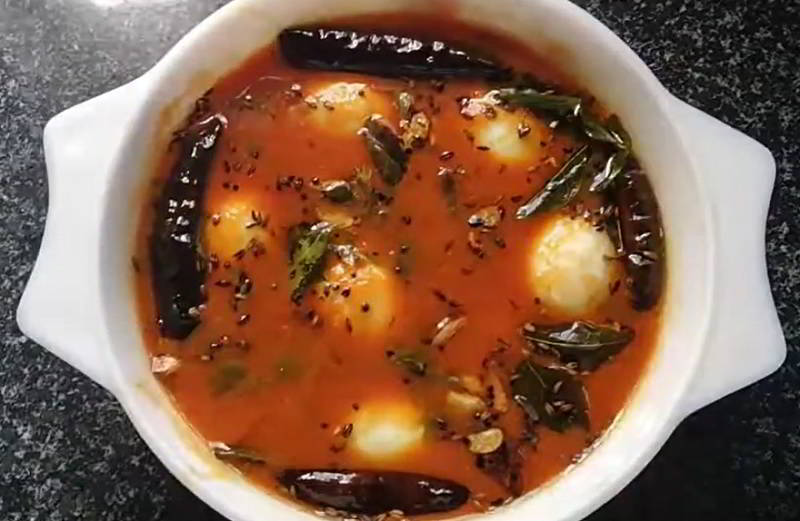
Tamate ka kut is a delicious and spicy gravy made from tomatoes, which gives it its distinct flavor and name. The dish is also known for its rich and tangy taste. To prepare Tamate ka kut, ripe tomatoes are pureed and cooked with a variety of spices like red chili powder, turmeric powder, coriander powder, and cumin powder. The gravy is then simmered on low heat until it thickens and the flavors blend together. Additionally, boiled eggs can also be added to the dish. Tamate ka kut is usually served with steamed rice or roti. It can be enjoyed as a main course or as a side dish. The dish is loved for its vibrant red color and the tanginess of the tomatoes. The spices used in the dish add a unique and aromatic touch to the overall flavor.
Kodi Gudla Pulusu
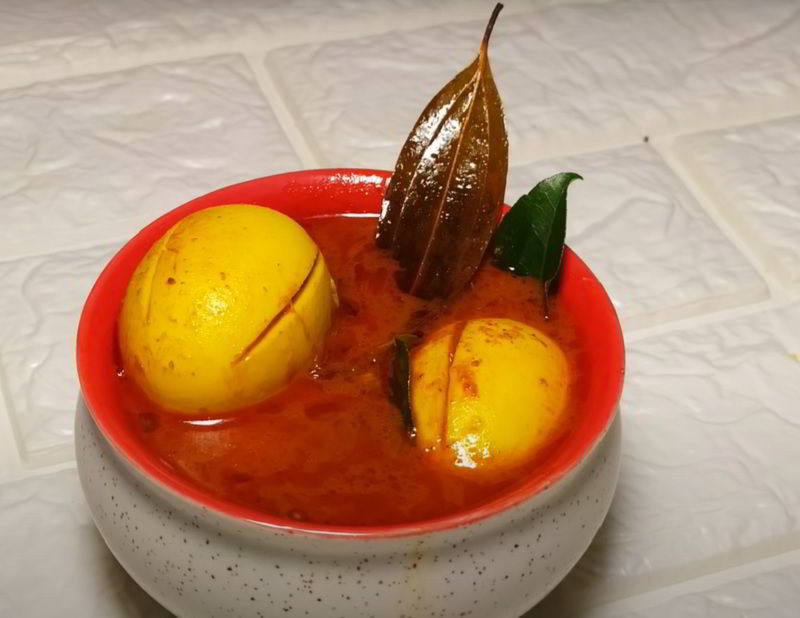
Kodi Guddu Pulusu is a beloved dish from Telangana cuisine, celebrated for its rich flavors and comforting appeal. To prepare this dish, boiled eggs are gently simmered in a flavorful sauce made primarily from tamarind pulp, which lends a tangy and slightly sour taste to the dish. The sauce is further enriched with a variety of aromatic spices such as mustard seeds, cumin seeds, fenugreek seeds, curry leaves, dried red chilies, turmeric, and garlic, creating a complex and enticing flavor profile. The eggs absorb the flavors of the sauce as they simmer, resulting in tender and succulent bites bursting with tanginess and spice. Kodi Guddu Pulusu is often enjoyed as a main course dish, served hot with steamed rice or chapati, making it a hearty and satisfying meal option. This dish is cherished for its comforting warmth and is a favorite in Telangana households, especially during festive occasions and family gatherings.
Puri
-1712052555.jpg)
Puri is a deep-fried bread made from wheat flour and is typically served with a variety of accompaniments. The process of making puri involves kneading the dough with water and a pinch of salt, and then rolling it into small, circular shapes. These dough circles are then deep-fried in oil until they become golden brown and puffed up. The result is a crispy and fluffy bread that is a delight to eat. Puri is often served with a side dish called Aloo Curry, which is a flavorful potato-based curry made with a blend of spices and herbs. It is also commonly served with Chole, which is a spicy and tangy chickpea curry. Puri is enjoyed by people of all ages and is a popular choice for breakfast, lunch, or dinner.
Papadam

Papadam is a crispy, thin, and disc-shaped snack made from lentil flour or rice flour. The dish is usually served as an accompaniment to main meals or as an appetizer. The preparation of papadam involves mixing the flour with water, salt, and spices such as cumin seeds, black pepper, or chili powder. The dough is then rolled into thin circles and dried under the sun or deep-fried until it becomes golden and crispy. Variations of papadam can also include adding ingredients like garlic, onion, or mint leaves to enhance its flavor. Papadam is not only delicious but also versatile. It can be enjoyed on its own, as a crispy snack, or paired with chutneys, pickles, or yogurt. In Telangana, it is often served alongside traditional dishes like biryani, curries, or dal. The crispiness and unique taste of papadam add an extra dimension to the meal, providing a delightful crunch and a burst of flavor.
Chapati
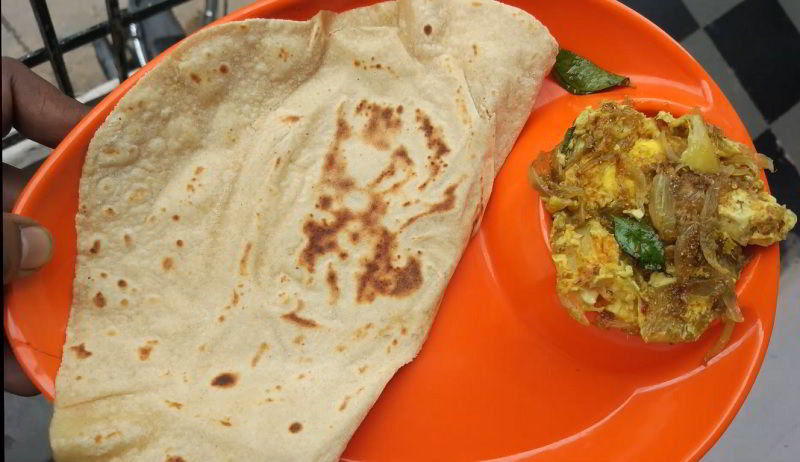
Chapati holds a cherished place in Telangana cuisine, valued for its simplicity and adaptability. Made from a blend of water, wheat flour, and a dash of salt, the dough undergoes careful kneading until it reaches a soft consistency. Rolled into thin, round discs, these chapatis are expertly cooked on a hot griddle or tawa until they puff up and develop a golden-brown hue, indicating their readiness. Typically accompanied by an assortment of side dishes, including curries, lentils, and vegetable preparations, chapati's tender and flaky texture serves as an ideal conduit for absorbing the flavors of these complementary dishes. Considered an indispensable element of Telangana meals, chapati is relished by individuals of all ages.
Raita
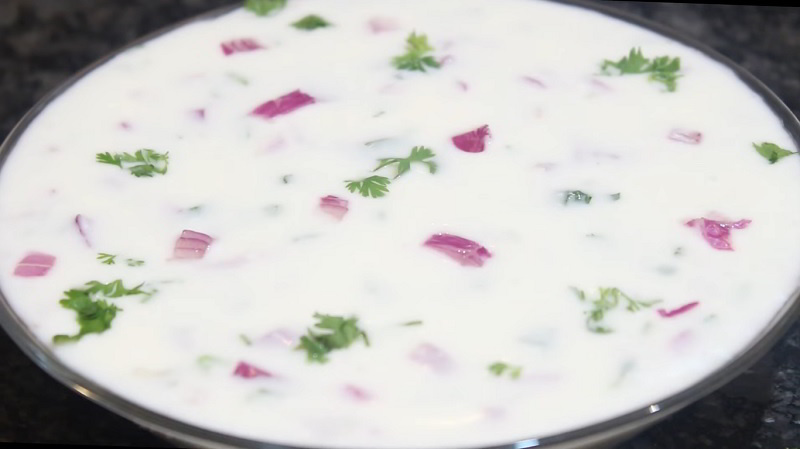
Raita is a popular side dish that serves as a refreshing and cooling accompaniment to spicy and flavorful main dishes. Raita is typically made with yogurt as its base, which is mixed with various ingredients to enhance its taste and texture. Common ingredients used in raita include finely chopped cucumbers, tomatoes, onions, carrots, and sometimes grated carrots or radishes. These vegetables add crunch and freshness to the raita, while also providing a contrast to the richness of other dishes. To season the raita, roasted cumin powder, black salt, and sometimes chopped cilantro or mint leaves are added, imparting a burst of flavor. Some variations may also include a pinch of chaat masala or red chili powder for an extra kick. Telangana raita is served chilled and pairs well with biryanis, pulao, kebabs, or any spicy curry.






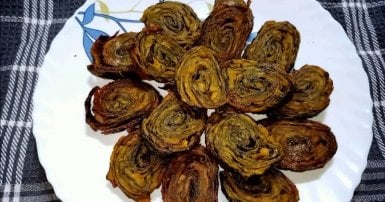
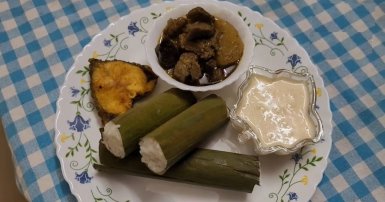
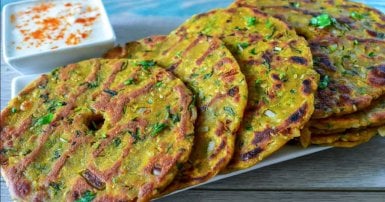
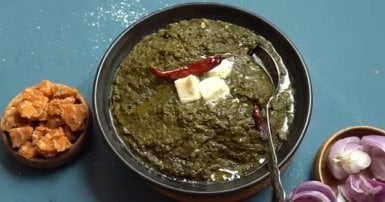
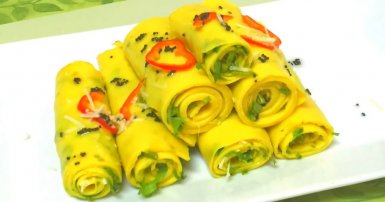
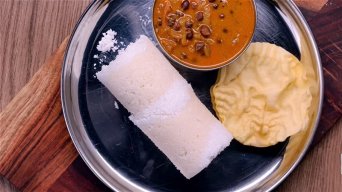

-1709813013.jpg)


